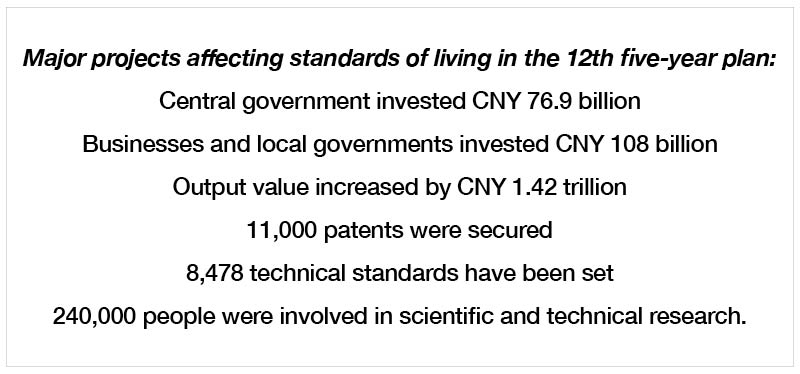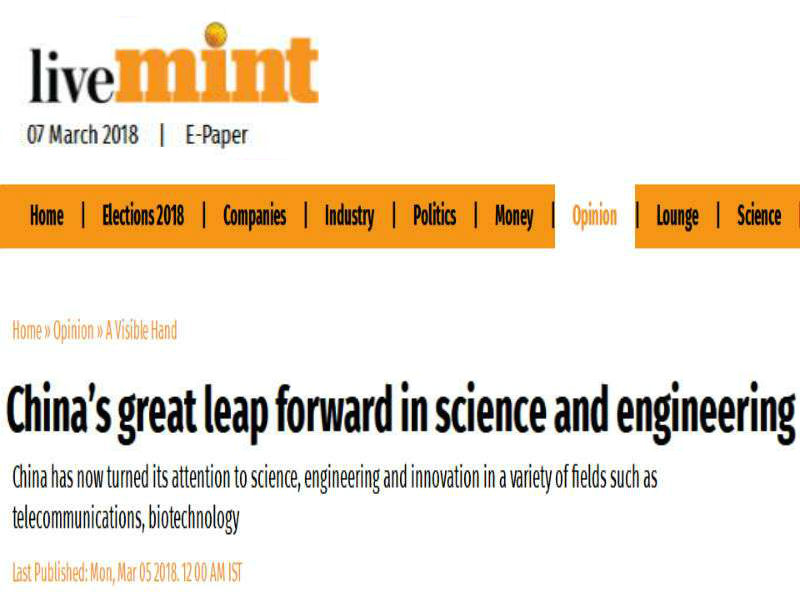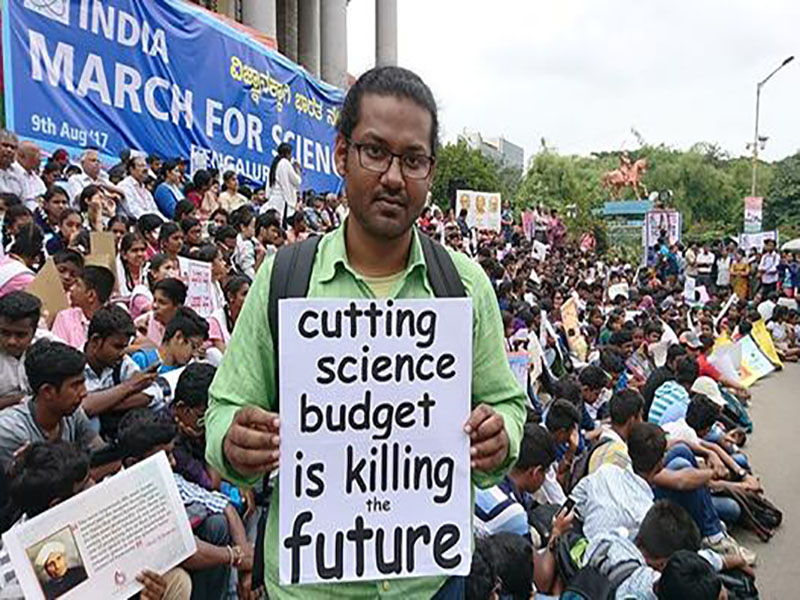
India Media: China’s Significant Progress in Science and Technology Sends a Clear Message to India
A few days ago, India’s media published an article speaking highly of the significant progress China has been made in the field of science and engineering, which bucks their normal trend.
A few days ago, India’s media published an article speaking highly of the significant progress China has made in the field of science and engineering, which bucks their normal trend. They acknowledged that China’s continuous implementation of systematic development programs, starting in the 1980s, has helped 700 million Chinese people to escape poverty and brought prosperity to their families. There is no doubt that China is on the way to a superpower.

Livemint.com of India published an article China’s great leap forward in science and engineering on March 5th recognizing that China has now turned its attention to science, engineering and innovation in a variety of fields such as telecommunications and biotechnology.

In January this year, the National Science Foundation (NSF) in the United States reported that for the first time the number of scientific publications from China in 2016 outnumbered those from the US, 426,000 to 409,000. China’s science establishment is pursuing scientific dominance with steely resolve backed by an impressive war-chest. Annual expenditure on research and development (R&D) in China has risen to $279 billion, second only to the US. It is expected to cross the US in a few years.
In 2017, China’s innovation index ranked No.22 in the world, 13 places ahead of its 2013 ranking (making it number one among developing countries).
The articel said that Chinese R&D spending today accounts for nearly 21% of the world’s total spending of $2 trillion. This spending grew at a rate of 18% a year between 2010 and 2015, four times faster than the US. The number of Chinese graduates in S&E is now approaching about 400,000 a year, double that of the US.

Starting about 10 years ago, Chinese Universities awarded more PhDs in S&E than the US. Even in the US, nearly 1/3rd of PhDs are awarded to students who have earned their baccalaureate degrees from foreign institutions, particularly from China. A concerted effort through the Thousand Talents plan has lured back hundreds of Chinese scholars from the West with the promise of modern laboratories and the freedom to pursue scientific research.

The artical mentioned that the world’s largest genetics research centre is now a Chinese company called BGI in Shenzhen. BGI is the largest customer of Illumina, the incumbent leader in genetic sequencing machines. BGI has set its sights on making the fastest next-generation sequencer in the world in order to meet the Chinese target of sequencing millions of it citizens by 2030.

At the other end of the spectrum, China have launched a mission to the far side of the moon, a feat not achieved by the US or Russia. The two-part Chang’e 4 mission, named after the Chinese moon goddess, will first establish a communication link between earth and the lunar far side and then launch a rover. The scientific pay-off is significant. Stray radio signals from earth are blocked on the far-side allowing a fully shielded view of the radio universe.
India media thinks that the message for India is clear. India must begin a systematic multi-decadal focus on R&D.
First, the facts. According to the National Science Foundation’s report, India spends a meagre $36 billion on R&D. The Indian Economic Survey for 2017-18 concludes that adjusted for its stage of development, India underspends on R&D. Money is, of course, only one part of the equation.
The other is the ecosystem and environment that makes for scholarship in basic sciences and the translation of that into the applied sciences. The governmental system for that is fractured by the divide between Universities and Soviet-style science laboratories.

Starved of funding and an integrated infrastructure for research, India’s universities have become mere degree granting institutions. Hemmed in by bureaucratic pay-scales and career paths, India’s research institutions have transformed scholars into clerks.
India’s path forward must anchor itself on these models, attract Indian diaspora PhDs and seek a widened footprint from private sector R&D. As India proceeds towards becoming a middle-income economy it will have little choice but to focus on its own great leap forward in science and engineering.
Source: Livemint.com
Editor: Dong Lingyi
The article is a re-edited version of the Mint Newspaper’s article《China’s great leap forward in science and engineering》
 Facebook
Facebook
 Twitter
Twitter
 Linkedin
Linkedin
 Google +
Google +


